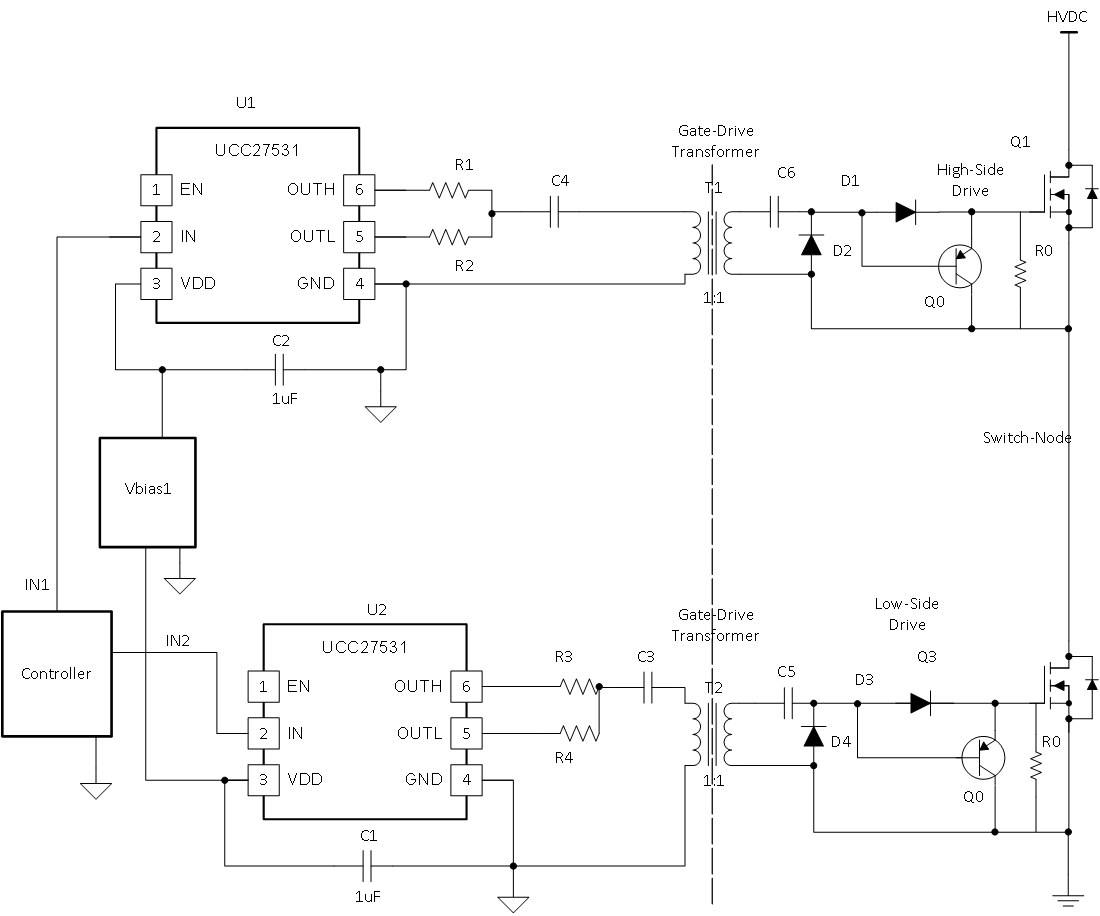SLUA669B March 2013 – September 2023 LM5112 , LM5112-Q1 , LM5114 , LM5134 , LMG1020 , LMG1025-Q1 , SM74101 , TPS2818-EP , TPS2819-EP , TPS2828 , TPS2829 , UC1705 , UC1705-SP , UC1710 , UC2705 , UC3710 , UCC27321 , UCC27321-Q1 , UCC27322 , UCC27322-EP , UCC27322-Q1 , UCC27332-Q1 , UCC27511 , UCC27511A , UCC27511A-Q1 , UCC27512 , UCC27512-EP , UCC27516 , UCC27517 , UCC27517A , UCC27517A-Q1 , UCC27518 , UCC27518A-Q1 , UCC27519 , UCC27519A-Q1 , UCC27531 , UCC27531-Q1 , UCC27532 , UCC27532-Q1 , UCC27533 , UCC27536 , UCC27537 , UCC27538 , UCC27611 , UCC27614 , UCC27614-Q1 , UCC37321 , UCC37322 , UCC44273 , UCC57102 , UCC57102-Q1 , UCC57108 , UCC57108-Q1 , UCD7100
2.1 Gate-Drive Transformer Solution
 Figure 2-1 High-Side Gate-Drive Transformer
Figure 2-1 High-Side Gate-Drive TransformerSignal Isolation
The output signals of U1 are isolated in Figure 2-1 with the use of T1. The transformer allows the gate signal to Q1 to have a floating reference that can move as the switch-node moves in voltage. DC blocking capacitors like C4 and C6 are added, as well as rectifier D1, and D2 to add offset to C6 preventing imbalance in the transformer. Q0 and R0 are used for turning off the power switch.
High-Side Bias
In Figure 2-1, an isolated or bootstrap supply is not needed. In this configuration the gate drivers are referenced to the same ground as the controller and Vbias1. Therefore, bias voltage can be directly supplied by Vbias1.